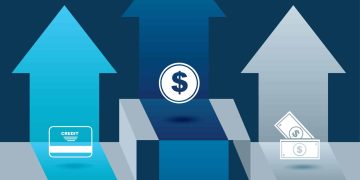What is passive investment? Learn everything and start using it.

Anúncios
Did you know that it’s possible to invest even without having much knowledge in the field or dedicating a lot of time to this type of work?
With passive investment, you build your wealth gradually and consistently, without needing to dedicate hours of your day to analyze the financial market.
That’s why, in this article, you will learn all about this strategy, from its benefits and risks to how to put it into practice.
Anúncios
Follow along to find out everything about passive investment.
So, what is passive investment?
Passive investment refers to an investment approach in which an investor seeks to replicate the performance of a specific market index, rather than actively trying to outperform it.
This strategy involves building a portfolio of investments that closely follows an index or a specific set of assets.
Anúncios
However, without the need for active decision-making of buying and selling based on constant market analysis.
There are several forms of passive investment, with one of the most common being index funds (ETFs) and passive management index funds.
These investment vehicles purchase and maintain a portfolio of assets that reflects the composition of a specific index, such as the S&P 500.
The idea is that by following the overall performance of the market, investors can achieve returns similar to those of the underlying index.
In contrast to active investment, where fund managers make active decisions to outperform the market, passive investment simply aims to track the market.
Proponents of passive investment argue that by avoiding attempts to predict the market and pick individual stocks, investors can reduce costs, minimize risks, and over time, achieve consistent returns.
Understand if passive investment is worth it
Now that you already know what passive investment is, it’s necessary to understand if it’s worth it. To do that, let’s list the positive and negative points of this type of investment for you to understand a little more about it:
Positive points
- Simplicity: Ideal for beginners or those who don’t have time to keep up with the market.
- Low cost: Management fees are generally lower than active investment funds.
- Diversification: Invests in a basket of assets, reducing the individual risk of each one.
- Efficiency: Lower likelihood of underperformance compared to the market.
- Accessibility: Possibility to invest with little money.
- Transparency: Fully transparent portfolio, with all assets listed.
- Liquidity: Ability to buy and sell shares at any time.
Negative points
- Volatility: The market may have sharp fluctuations, impacting the value of investments.
- Lack of control: You don’t choose the assets individually.
- Lower returns: There’s no potential to outperform the market (in the long term, it tends to follow the market).
- Market risk: Possibility of losses if the market falls.
- Less flexibility: Difficulty adjusting the portfolio according to your needs.
- Difficulty in outperforming the market: In the long term, it tends to follow the market, but there’s no potential to outperform it.
How to start investing?
Getting started with passive investing involves some basic steps. Here are some guidelines to help you get started:
Financial Education: Establish Financial Goals
Before you start investing, it’s important to have a basic understanding of financial concepts such as risk, return, diversification, and how financial markets work.
There are many online resources, books, and courses that can help build this knowledge.
Next, define your short, medium, and long-term financial goals.
This may include goals such as buying a house, paying for your children’s education, or retiring comfortably.
Your goals will help guide your investment decisions.
Assess Your Risk Profile
Understanding your risk appetite is crucial. Therefore, determine how much risk you are willing to accept in your investments.
Passive investment is generally considered less risky than active strategies, but it’s still important to align your investments with your risk profile.
Choose a Broker or Investment Platform
To invest in index funds (ETFs) or other passive investment products, you’ll need an account with a brokerage firm or investment platform.
So, make sure to choose a reliable, low-cost brokerage firm that offers the investment products you desire.
Select index funds or ETFs that align with your investment goals and strategies.
While passive investment already provides diversification through index replication, it’s still important to consider diversification across different asset classes (stocks, bonds, etc.) to reduce risk.
Regular Contributions and Periodic Review
Consider regularly contributing money to your investment portfolio. This is known as periodic investing and helps smooth out the effects of market volatility.
Therefore, regularly monitor your investments and make adjustments as needed. This may involve rebalancing your portfolio to maintain the desired asset allocation.
Passive investment often involves a long-term approach. So, be patient, avoid making impulsive decisions based on short-term market movements, and maintain discipline regarding your investment strategy.
Remember that even with passive investment, it’s essential to conduct adequate research and, if necessary, seek guidance from financial professionals.
Understand the differences between passive and active investments
The differences between passive and active investments are related to the approach adopted by investors in managing their portfolios.
In the context of management, passive investment is characterized by a more automatic approach. Thus, following the strategy of replicating the performance of a specific index or market.
Therefore, this modality does not involve active decisions of buying and selling based on frequent analyses.
In contrast, active investment implies a more dynamic management.
That is, with fund managers or individual investors seeking to outperform the market through detailed analysis, selection of stocks or other assets, and frequent portfolio adjustments.
Check out more differences below:
Objectives
Regarding objectives, passive investment primarily aims to track the performance of the market or underlying index.
Thus, seeking returns similar to those of the reference index.
On the other hand, active investment aims to outperform the market and achieve above-average returns.
Thus, involving the identification of investment opportunities that can generate additional gains.
Costs
In terms of costs, passive investment generally has lower costs due to automated management.
Meanwhile, active investment can have higher costs due to the need to pay fund managers and research teams constantly involved in analysis and decision-making.
Diversification
Regarding diversification, passive investment offers natural diversification. After all, index funds or ETFs typically include a variety of assets that make up the reference index.
On the other hand, in active investment, diversification depends on the active choices of fund managers or individual investors.
Attention required
In terms of attention and time required, passive investment demands less constant attention, being more associated with the “buy and hold” strategy.
While active investment requires continuous monitoring of the market, economic news, and frequent portfolio adjustments.
Risks involved
In terms of risk, passive investment tends to present lower risk compared to active strategies. Since it does not depend on the ability of managers to select assets.
On the other hand, active investment can involve higher risks, especially if asset choices or market timing are inaccurate.
Both approaches have their merits, and the choice between passive and active investment depends on the investor’s objectives, risk tolerance, and individual preferences.
Some people opt for a hybrid approach, combining elements of both strategies in their portfolios.
Did you like learning what is passive investment? Analyze this form of investment so that you can have diversity and security.
And check out more tips on our website.





